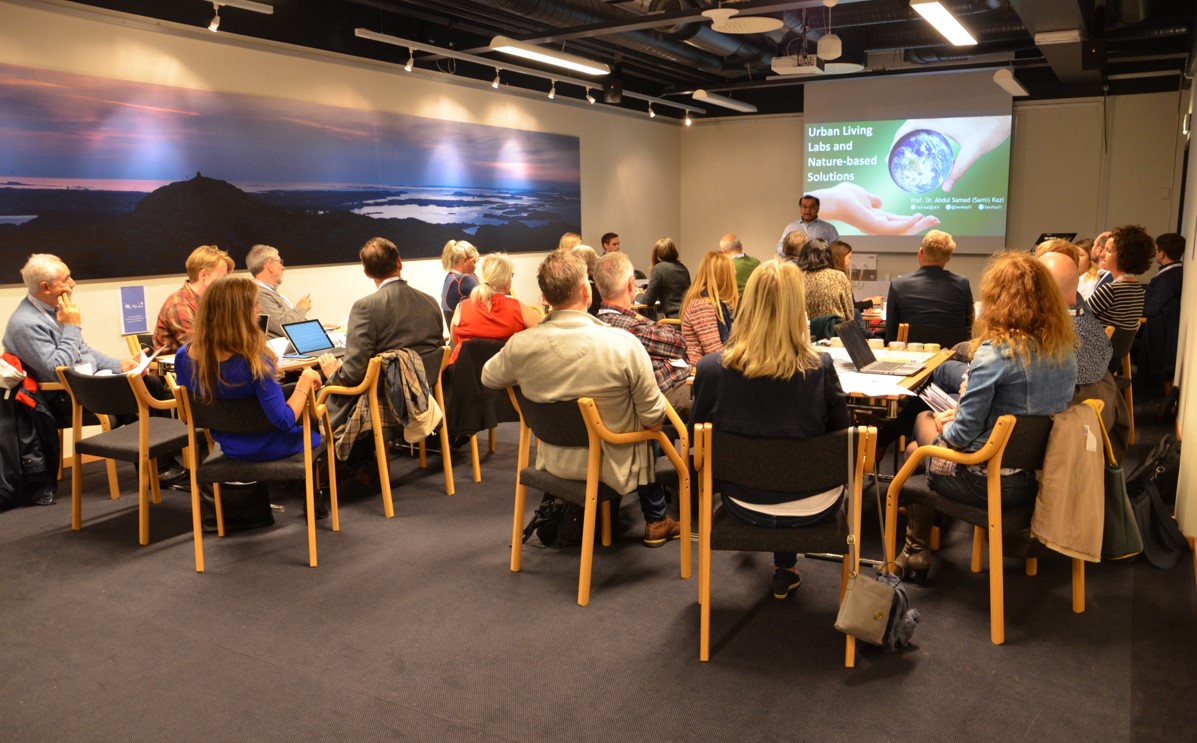
Nature-based Solutions Workshop at the Nordic Edge
- Tue, 09/10/2018
The ENoLL team was at the Nordic Edge Expo & Conferance running a workshop within the scope of the UNaLab project titled Co-creating Smart Nature-based Liveable Spaces – Necessary Solutions for Real Life Challenges. The workshop, which was held on 26th September, was co-organised with ERRIN and its Smart Cities Working Group members Eindhoven, Stavanger Region EU Office and Cities Northern Netherlands. We used the CoCo toolkit methodology, which was developed by ENoLL Member Laurea University and allowed an interactive session for all participants.
The session was opened by Ryan Titley (ERRIN) and Zsuzsanna Bodi (ENoLL), who introduced the work of the two networks they are representing. The introduction to urban living labs and nature-based solutions was given by Sami Kazi, UNaLab project coordinator. The two concepts can be unfamiliar to participants and to fully immerse in the co-creative session, the basic concepts have to be well understood. Particularly the concept of nature-based solutions (NBS), which is defined by the European Commission as “solutions that are inspired and supported by nature, which are cost-effective, simultaneously provide environmental, social and economic benefits and help build resilience”.
Following the UNaLab presentation, we looked into urban living labs and living lab services. Three successful living lab examples presented their work: the city of Eindhoven, which is also a UNaLab partner developing nature-based solutions in the city centre; Gate 21, which is a Danish living lab host organisation developing smart city projects in Copenhagen; and OULLabs, showing us how living labs can provide a wide range of services to companies.
![]()
As the audience warmed up to the idea of urban living labs and nature-based solutions, the co-creative part of the session began. Four tables were tackling four different challenges, that had been put forward by different European cities.
- The Stavanger City Council (Norway) proposed a topic on Problematic surface water from extreme rain events. The solution to save the gardens and plants from flooding is a design where the user is working with the green solution to slow down the water in the paths - getting the surrounding citizens and business owners to take an active part in solving the problem.
- The City of Leeuwarden in the Netherlands faces the problem of Imbalance between biodiversity, agriculture and economic profitability. The participants told a story of Dave, the unsustainable farmer, and Anita, the sustainable farmer. Anita's case is supported by education in sustainable farming and (social) media outlets to inform citizens, leading to increased awareness of sustainable farming solutions. This knowledge will encourage citizens to stop buying goods from unsustainable farmers, leading to a loss of profits for Dave, and influence the farmers union towards more sustainable farming solutions.
- SnailMob from Geneva, Switzerland, tackles the problem of Traffic congestions that prevent daily last-mile commuting in city-centers (see the video by SnailMob representatives explaining the challenge). The participating team created "the last green mile ring" solution where the cars park by the ring road surrounding the city and a public transport is provided for getting into the city centre. In the core centre, different electric transport solutions are also accessible by using public transport cards, making Geneva a green and fun place to live.
- The City of Tampere, Finland, proposed a challenge on Densification of Nordic cities challenges multi-functionality of small spaces. In order to develop environmental and public functions, while the city center densifies, the solution engages organisations and NGOs to build a consortium to work on the issue through a joint strategy together with the core group and citizens. Engaging people through a participation strategy: street party events, public exhibits, digital platforms, schools, newspapers, in order to facilitate crowdsourcing and crowd planning.
You can find more pictures from the workshop here.
This article was originally posted on ENoLL's website and can be accessed here.